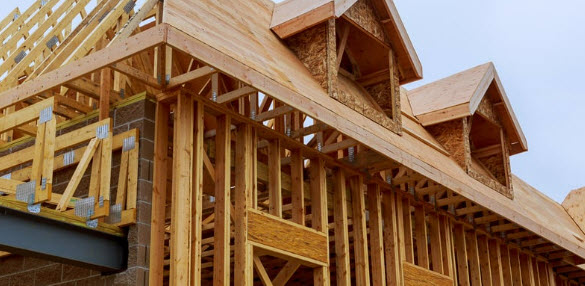So, you’ve been scrolling through listings, dreaming about that perfect kitchen, and picturing your future in a new home. It’s an exciting time! But as you move from dreaming to doing, you’ll quickly encounter two terms that sound suspiciously similar: mortgage pre-qualification and mortgage pre-approval. It’s easy to assume they’re interchangeable, just another piece of jargon in the complex world of real estate. However, treating them the same is one of the biggest missteps a potential homebuyer can make. Understanding the difference isn’t just about semantics; it’s about positioning yourself as a serious, capable buyer in a competitive market. One is a casual estimate, while the other is a powerful tool that can mean the difference between getting the keys to your dream home or watching it go to someone else.
What is a Mortgage Pre-Qualification? The First Handshake
Think of a mortgage pre-qualification as the initial, informal “hello” with a lender. It’s a quick and easy first step that gives you a ballpark figure of how much you might be able to borrow.
The Process: A Financial Snapshot
To get pre-qualified, you’ll typically have a brief conversation with a loan officer or fill out a simple online form. You’ll provide basic, self-reported financial information, such as:
- Your estimated annual income
- A rough idea of your total assets (savings, investments)
- Your approximate total monthly debts (car loans, student loans, credit card payments)
- Your estimated credit score
The key word here is self-reported. The lender takes your word for it. They don’t pull your official credit report (though some may do a “soft pull,” which doesn’t affect your score) and they don’t ask for any documents to back up your claims. Based on this surface-level information, they run a quick calculation and give you an estimate.
Analogy: A mortgage pre-qualification is like using an online calorie calculator. You plug in your age, weight, and activity level, and it gives you a general idea of your daily needs. It’s a helpful starting point, but it doesn’t account for your specific metabolism or health conditions.
Pros and Cons of Pre-Qualification
Pros:
- Fast and Easy: The process can often be completed in minutes.
- No Cost: Most lenders offer pre-qualification for free.
- No Credit Impact: Since it typically involves a soft (or no) credit inquiry, it won’t affect your credit score.
- Good Starting Point: It helps you get a preliminary sense of your budget before you get serious about house hunting.
Cons:
- Highly Inaccurate: The amount is just an estimate based on unverified information. The final loan amount could be significantly different.
- Holds Little Weight: Sellers and real estate agents know it’s not a firm commitment from a lender, so it won’t make your offer stand out.
What is a Mortgage Pre-Approval? The Official Vetting
If pre-qualification is the first handshake, a mortgage pre-approval is the full background check. This is where you and the lender get serious. It’s a much more rigorous process that results in a conditional commitment from the lender to loan you a specific amount of money.
The Process: A Financial Deep Dive
Getting pre-approved means you are formally applying for a mortgage. The lender will ask you to provide extensive documentation to verify every aspect of your financial life. Prepare to gather the following:
- Proof of Income: W-2s and tax returns for the last two years, and recent pay stubs.
- Proof of Assets: Bank statements, investment account statements, and retirement account statements.
- Debt Information: Statements for all your loans (auto, student, etc.) and credit cards.
- Identification: Driver’s license and Social Security number.
With your permission, the lender will then perform a hard credit inquiry. This is a formal credit check that will be recorded on your credit report and can temporarily dip your score by a few points. An underwriter—the person who makes the final loan decision—will then review your entire financial profile. If everything checks out, the lender will issue a pre-approval letter. This letter states the exact loan amount and interest rate they are willing to offer you, contingent on a successful home appraisal and no major changes to your financial situation.
Analogy: A mortgage pre-approval is like getting a full physical exam from a doctor. They check your vitals, run blood work, and review your medical history. The result is a comprehensive and accurate assessment of your health.
Pros and Cons of Pre-Approval
Pros:
- Accurate and Reliable: You’ll know exactly how much you can afford, giving you confidence in your search.
- Serious Buyer Status: A pre-approval letter shows sellers you are a credible buyer whose financing is secure.
- Competitive Edge: In a bidding war, an offer from a pre-approved buyer is far more attractive than one from a pre-qualified buyer.
- Faster Closing: Since most of your financial information is already verified, the final mortgage approval process is much quicker.
Cons:
- Time-Consuming: Gathering all the necessary documents can take time.
- Hard Credit Inquiry: The formal credit check will slightly impact your credit score.
- Limited Timeframe: Pre-approval letters are typically only valid for 60-90 days. If you don’t find a home in that window, you may need to get re-approved.
Pre-Qualification vs. Pre-Approval: A Head-to-Head Comparison
| Feature | Mortgage Pre-Qualification | Mortgage Pre-Approval |
| Process | Quick estimate based on self-reported data. | In-depth verification of financial documents. |
| Documents | None required. | W-2s, tax returns, pay stubs, bank statements, etc. |
| Credit Check | Soft inquiry or no inquiry. | Hard inquiry (impacts credit score). |
| Timeline | A few minutes to an hour. | A few days to over a week. |
| Accuracy | A rough ballpark figure. | A specific, reliable loan amount. |
| Impact on Offer | Minimal. Shows you’re just starting. | Significant. Shows you’re a serious, prepared buyer. |
Why the Difference Matters: From Dreamer to Homeowner
So, why do we make such a big deal about this? Because in the real world of home buying, a pre-approval letter can be your golden ticket.
Power for the Buyer
Imagine walking into an open house. With a pre-qualification, you think you can afford it. With a pre-approval, you know you can. This confidence is a game-changer. It allows you to:
- Set a Realistic Budget: You won’t waste time looking at homes outside your price range.
- Negotiate from Strength: Your offer is backed by a lender, giving you more leverage.
- Uncover Financial Hurdles Early: The pre-approval process might flag issues with your credit or debt-to-income ratio, giving you time to fix them.
Power with Your Agent
Real estate agents are busy professionals. They want to invest their time in clients who are ready and able to buy. A pre-approval letter signals that you’re a serious contender, not just a window shopper. Many agents will prioritize working with pre-approved buyers and may even require it before they start showing you homes.
Power with the Seller
This is where it matters most. Put yourself in a seller’s shoes. They have two offers for the same price.
- Offer A: Comes from a buyer who is pre-qualified. The financing is a question mark. The deal could fall apart if the lender discovers issues during final underwriting.
- Offer B: Comes from a buyer who is pre-approved. The financing is virtually secured. The deal is much more likely to close quickly and smoothly.
Which offer would you choose? Overwhelmingly, sellers choose Offer B. In fact, a Zillow Consumer Housing Trends Report found that 85% of sellers prefer an offer from a buyer who is pre-approved. In a competitive market, not having a pre-approval letter can get your offer moved to the bottom of the pile, or even dismissed entirely.
Real-World Scenarios: See the Difference in Action
Scenario 1: The Savvy First-Timer
- The Buyer: Sarah is a first-time homebuyer. She starts by getting pre-qualified online to get a rough idea of her budget. Armed with that estimate, she starts casually browsing listings. Once she decides she’s ready to get serious, she works with a loan officer at Home Loan Advisor to get pre-approved. With her pre-approval letter in hand, she makes a confident offer on a condo and the seller accepts, knowing her financing is solid.
Scenario 2: The Bidding War
- The Buyers: The Miller family and the Jones family both love the same house. Both offer the asking price. The Millers have a pre-qualification letter. The Joneses have a pre-approval letter from their lender. The seller accepts the Joneses’ offer because it represents a much lower risk of the deal falling through. The Joneses get their dream home; the Millers are back to searching.
Frequently Asked Questions (FAQ)
Q: How long does a mortgage pre-approval last?
A pre-approval letter is typically valid for 60 to 90 days. This is because your financial situation and credit profile can change. If you don’t find a home within that timeframe, you’ll likely need to submit updated documents to get re-approved.
Q: Will getting pre-approved hurt my credit score?
Getting pre-approved requires a hard credit inquiry, which can cause a small, temporary drop in your credit score (usually less than five points). However, credit scoring models are smart. They understand that people shop around for the best mortgage rates. All mortgage-related hard inquiries made within a 14 to 45-day window (depending on the scoring model) are treated as a single event. This allows you to get pre-approved with multiple lenders without your score taking multiple hits.
Q: Can I get pre-approved with more than one lender?
Absolutely! In fact, it’s highly recommended. Shopping around allows you to compare interest rates, fees, and loan terms to find the best deal. This could save you tens of thousands of dollars over the life of your loan.
Q: Is a pre-approval a 100% guarantee of a loan?
No, it’s a conditional commitment. The loan is still subject to a few final conditions, such as a satisfactory appraisal of the property (to ensure it’s worth the price you’re paying) and no significant negative changes to your financial situation (like losing your job or taking on new debt). It’s crucial to keep your finances stable between pre-approval and closing.
Your Next Step: Move from Browser to Buyer
While a pre-qualification is a fine place to start your journey, the mortgage pre-approval is the essential tool for anyone serious about buying a home. It transforms you from a casual browser into a powerful, prepared buyer. It gives you, your agent, and the seller the confidence that you can and will close the deal.
Navigating the home loan process can feel overwhelming, but you don’t have to do it alone. Taking the step to get pre-approved is your first major move toward homeownership.
Ready to show sellers you mean business? Contact a Home Loan Advisor today to start your pre-approval process and take the first real step toward unlocking the door to your new home.



